I need to begin this story with a personal anecdote to give it proper context.
Over quarantine, I accomplished a lot of personal goals, including writing more stories, becoming very good at Among Us and, arguably the most important, got more involved on my Twitter account. I bring this up because soon afterwards, I came across this tweet from College Football on Fox:
RT if your team has ever held the No. 1 spot in AP Poll History! 🙌 pic.twitter.com/Mr7ehYhgRn
— FOX College Football (@CFBONFOX) May 22, 2020
Now you might notice the same thing I did: Northwestern is somehow on this graphic. Northwestern, who set records for losing in the seventies and early eighties. Northwestern, who went 63 years without winning a bowl game. Northwestern was ranked No. 1? How is that possible?
Thanks to scrolling through all Wikipedia records and deeper research, I have found that Northwestern was ranked No. 1 twice: for three weeks in 1936 and one magical week in 1962. But what happened to these teams? Why does everyone talk about 1949 and 1995 but not ‘36 and ‘62? This article tells these two stories, which include one of the more interesting sports writing controversies and a famous head coach.
1936: The First Ever AP Poll

College football has been around since the mid-1800s, with the first intercollegiate game occurring between Rutgers and Princeton in 1869. Northwestern’s first intercollegiate matchup was a matinee against nearby Lake Forest College in 1882. As expected, a lack of easy travel options made football a mostly regional game, with NU only playing in-state opponents until 1892.
After a few years of experimentation and new success in different conferences, college football gained nationwide popularity in the 1930s: the Heisman Trophy was awarded for the first time, and people across the country were engaging with different teams. Different sports writers also began experimenting with their own rankings, tinkering with different teams and trying to guess hypothetical scenarios to determine a national champion, with readers and writers alike voting for their own champion. One of the most popular was the Associated Press’s edition, with sports editor Alan J. Gould making the picks himself.
Gould, however, received criticism when he picked a whopping three national champions in 1935: Princeton, Southern Methodist and the Big Ten’s own Minnesota. Many fans cried foul, saying they didn’t need to share a national title based on one man’s opinion, and that a majority vote should determine who the true champion was. Gould agreed, and handpicked 35 sports writers to help him pick 20 teams weekly after a chunk of the season had passed.
Enter the 1936 Wildcats. Led by head coach Pappy Waldorf, Northwestern was a top dog in the Big Ten’s early days, winning a share of the conference title in 1903, 1926, 1930 and 1931. Northwestern also had the privilege of playing in what was considered a modern palace of college football, Dyche Stadium — or as fans know it today, Ryan Field.
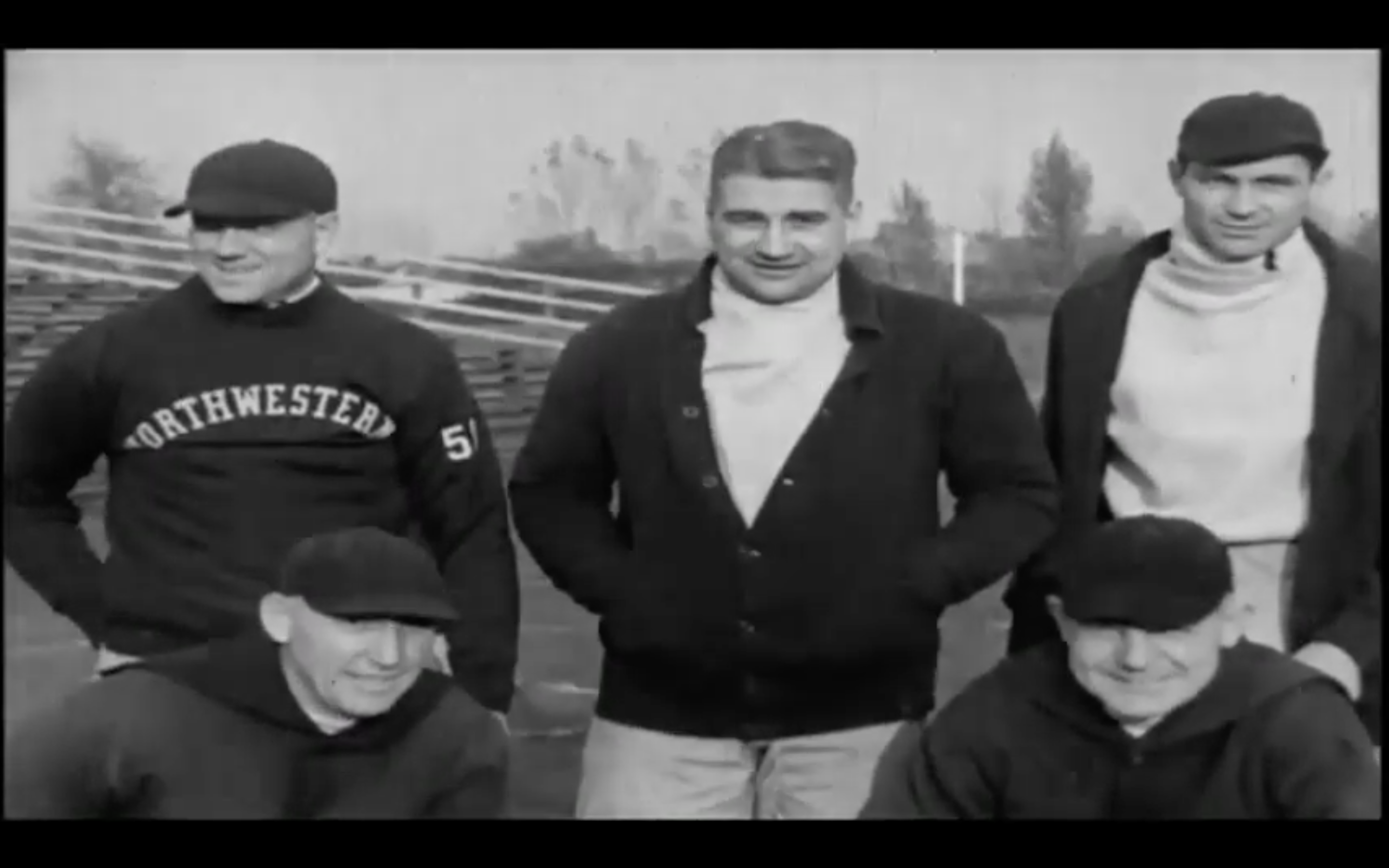
Unfortunately, Northwestern almost always finished close behind Michigan and the powerhouse Minnesota. The latter went three seasons without losing a game (although ties were still a valid end to the game then) and won the previous two “national championships.” But Northwestern was optimistic, beginning 1936 with one of the best fielded teams in school history.
The star of the program was guard Steve Reid, the all-American captain of the team and leader of the offense. Reid was essential to the NU offense, as he, along with tackle Bob Voigts, led a run-heavy power-hitting squad that relied on short gains to run up the scores. Halfbacks Don Heap and Bernard Jefferson led the running game, while Fred Vanzo threw the occasional forward pass (legal, but rarely used).
Through their first five games, Northwestern tallied 85 total points of offense, beating teams like Iowa, Ohio State, rival Illinois and North Dakota Agricultural College (now known as Division II powerhouse North Dakota State).
Up north, the Golden Gophers plowed through their own schedule, tallying 80 points while beating Washington, Nebraska, Michigan and then-No. 5 ranked Purdue. At the end of four weeks, Minnesota was ranked first overall in the first ever AP Poll, while the ’Cats stalked behind them at No. 3.
On Oct. 31, 1936, the stage was set for a match unlike any other: Northwestern vs Minnesota for national prowess. Evanston was abuzz with excitement, as the administration had made this match their homecoming game. A parade was held, alumni gathered throughout campus and University President Walter Dill Scott spoke to incoming fans. When asked who he thought would win the match, Scott wittily replied “Why, that’s easy! It’s just as certain as the presidential election!”
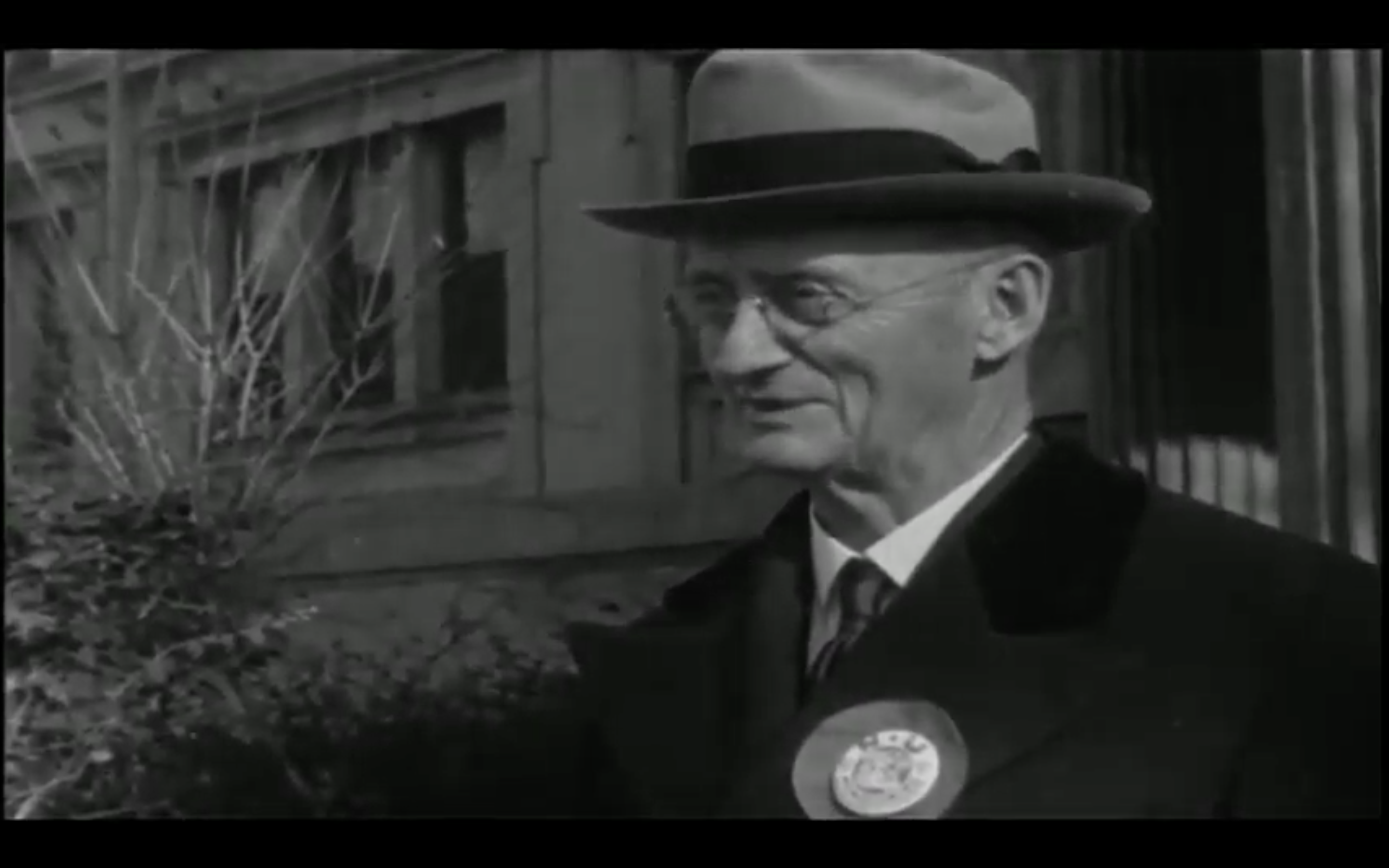
President Franklin Delano Roosevelt would sweep the election four days later, winning 523 electoral votes. But that’s another story.
Halloween was a windy, rainy day in Evanston, and the offenses almost stood still through the first three quarters. Neither team made much forward progress, and gusts of wind blew away any attempts at field goals. After three quarters, Northwestern and Minnesota were tied, 0-0.
Yet towards the end of the third quarter, Northwestern’s offense started to click, and Minnesota got sloppy. Northwestern began to march down the field, and just 15 yards from the goal line, Minnesota was penalized for unnecessary roughness during a shoving match in the dogpile.
Northwestern set up shop at the goal line, and Steve Toth bulldozed his way into the end zone, giving Northwestern a 6-0 lead. Minnesota tried to come back but couldn’t. The Big Ten champ was dethroned, and the Wildcats had done it: they were No 1.
Highlights from Northwestern's 6-0 win over Minnesota in 1936. The video also includes some footage from homecoming festivities that weekend.
The ’Cats, now in sole possession of the Big Ten throne, finished off their conference schedule with a 26-18 win over Wisconsin and a kicker’s dream 9-0 win over Michigan at Ann Arbor. With the win, they clinched the Big Ten Championship.
Sitting at 7-0, only one team stood between the ’Cats and a perfect season: Notre Dame. Just like always, the Fighting Irish were not about to be run over by some conference champion, and they dominated the ’Cats 26-6. The magical run had ended.
Of course, there were still tons of arguments one could make for the ’Cats being national champions — they won their conference, they beat the two-time national champion and they had a perfect record in conference play. Unfortunately, the AP looked more fondly on Minnesota, who after losing to NU, dominated Texas 47-19 and Wisconsin 24-0. Despite losing the Big Ten, Minnesota was awarded the first official AP National Championship. Northwestern ended with a final ranking of 7.
This would be the last Big Ten title until the ’Cats’ magical run in ‘95, but fans in Evanston weren’t done partying yet. Tackle Bob Voigts would return to the team in 1947 and coach the ’Cats to their only Rose Bowl win in 1949.
The first AP Poll was not perfect. It lacked the modern media and statistics we have today, it lacked proper context for some of the scores and some of the sports writers just made weird picks. One picked Slippery Rock University to win the title, due to their win over a team which beat a team which beat a team that beat Minnesota. Yet it allowed for one of the coolest times to be a Wildcat in history: Northwestern was No. 1 in the country in just the first poll ever.
It would only happen once more, in 1962.
1962: The forgotten campaign
This story is one that is often overlooked when it comes to Northwestern football history, without a true explanation why. Maybe it was the lack of a postseason back then. Perhaps it was the failure to win the Big Ten that season. Regardless, the 1962 campaign doesn't often come up in Northwestern football trivia, apart from being briefly ranked in the top spot for two weeks.
And yet, a story remains. The 1962 Northwestern football team was arguably one of the greatest ever, with one of the earliest examples of a dynamic passing attack. It began at the very top with legendary head coach Ara Parseghian.
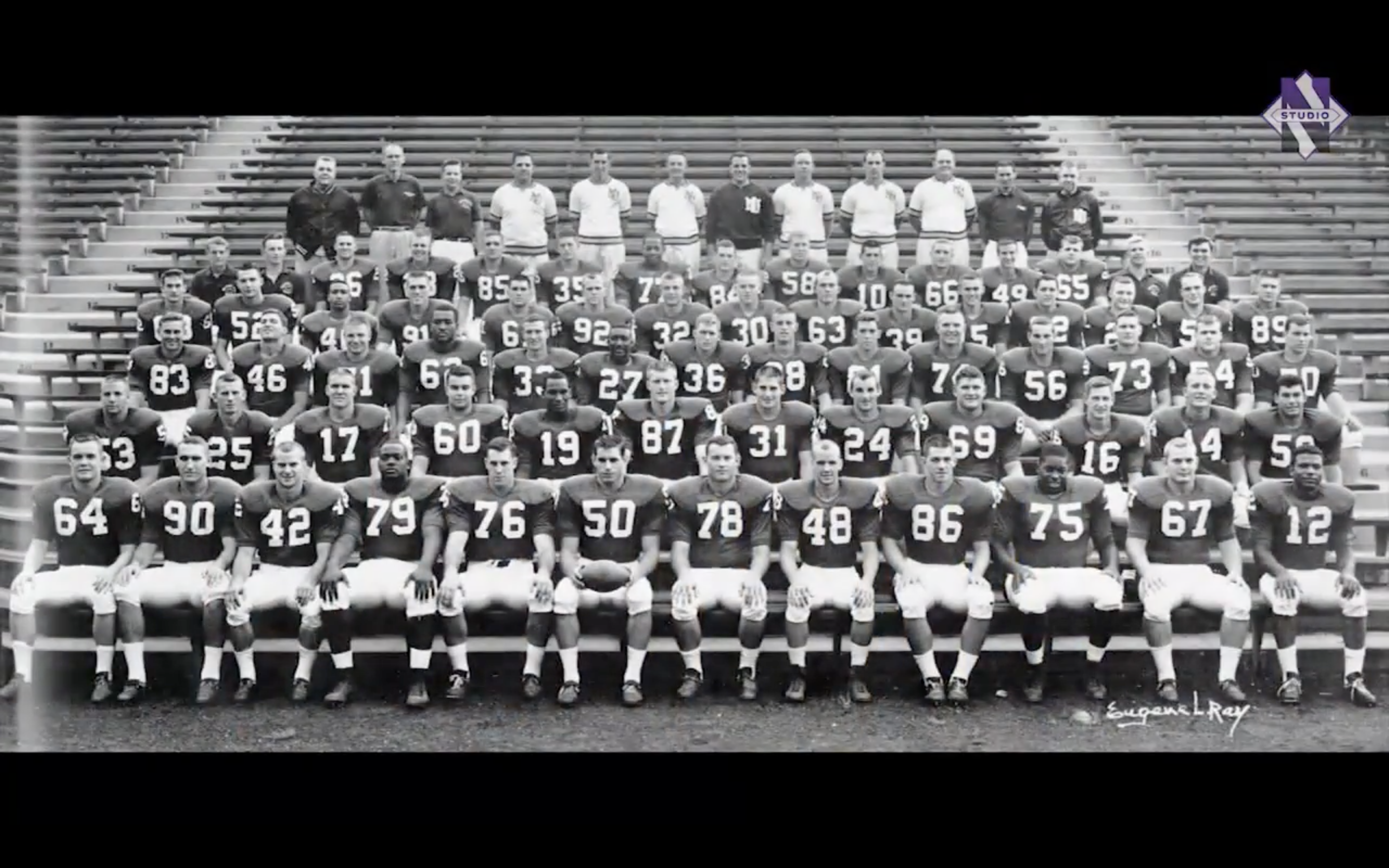
For those who don’t recognize the name, Parseghian was a legendary football coach widely recognized for his work with the Notre Dame Fighting Irish, coaching the program to two national championships in 1966 and 1973 and bringing the program back to powerhouse status. Before arriving in South Bend, however, Parseghian was a fantastic head coach for Northwestern, coaching the ’Cats from 1956 to 1963.
Under Parseghian, the ’Cats turned around early struggles (including a 0-9 season in 1957) and started gaining recognition for their play from the AP Poll, including five straight weeks sitting at No. 2 in 1959 and two famous wins over Oklahoma in 1959 and 1960. After finishing 4-5 in 1961, however, it was clear the team needed to step up its game and return to dominance.
In 1962, the ’Cats put together a show unlike any other and put out arguably the greatest offense Evanston has ever seen. With a new quarterback in Tom Myers and seasoned halfback Paul Flatley serving as a key target, Northwestern erupted into a scheme that the team hadn’t previously tried: a halfback serving great time as a receiver, and the quarterback making the throw a key part of the offense. Team captain and starting center Jay Robertson remembered the change well.
“The interesting part of that season … is [that] it had been a very physical running offense under Parseghian,” Robertson told a crowd on Homecoming Weekend 2012. “We had some very good quarterbacks too, with guys like Dick Thorton, who I thought was a spectacular football player … but I don't think we had the total pass offense. But once Tom came in, Paul was moved to receiver, the pass became a big part of the offense.”
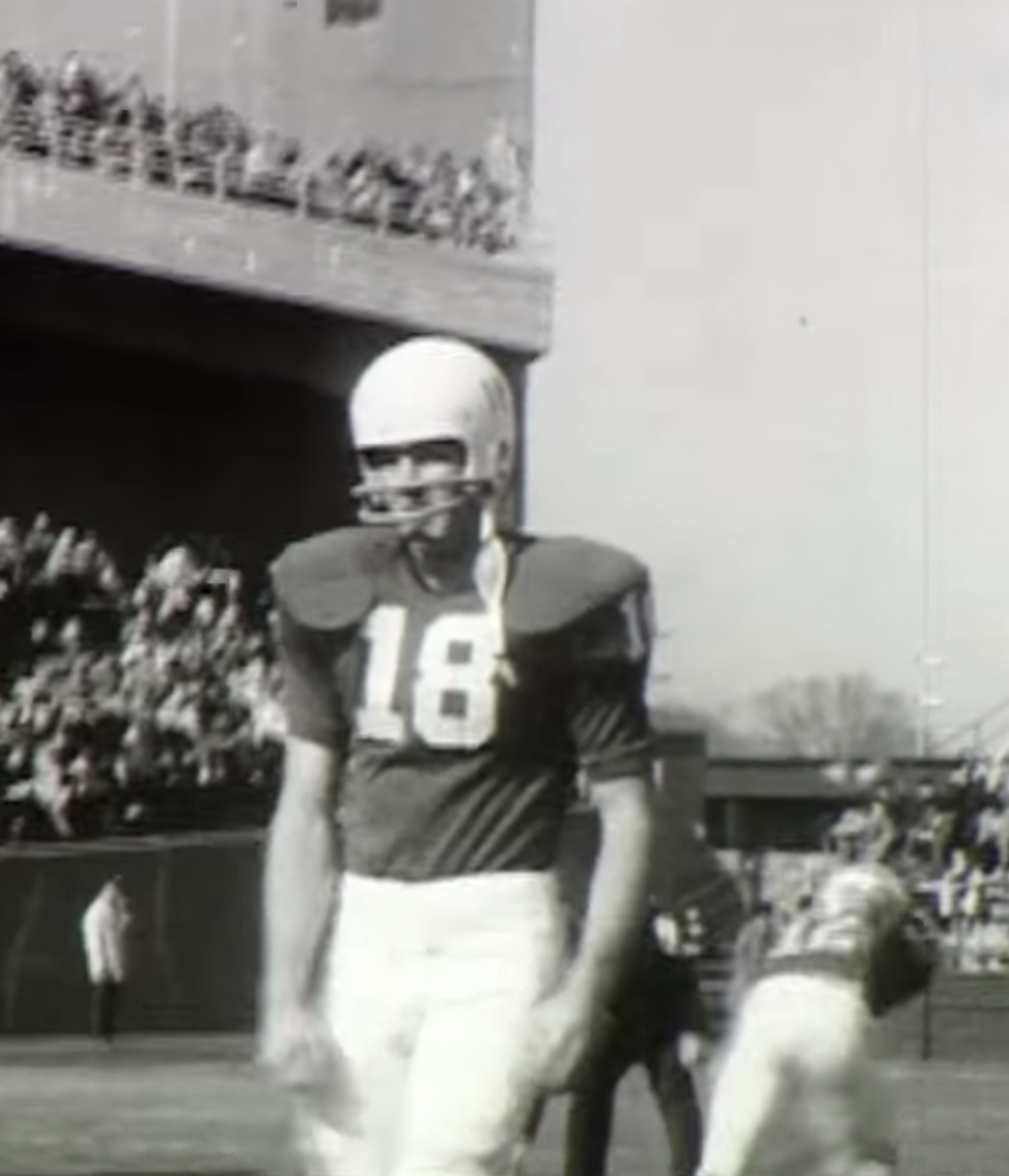
The scheme proved almost an immediate success. In the ’Cats’ opening game against South Carolina, Myers threw a then-NCAA record of 15 consecutive completions to start his career. After beating the Gamecocks 37-20, Northwestern took on rival Illinois at home, beating the Fighting Illini a whopping 45-0.
Robertson recalled the game as a true benchmark for what the offense would accomplish, remembering that even the Illinois defense showed respect to Flatley’s work as a receiver.
“Illinois, he dazzled. After the game, as we’re jogging off field, three Illinois DBS came up to Paul and they said ‘Man, I don't know what it's gonna take, you killed us … Man, let me shake your hand,’” Robertson recalled.
The next game served a greater challenge, as they went on the road to play Minnesota and a mighty defense that was notorious for not allowing a single point. In 1962, Minnesota only allowed 61 points on defense, a remarkable accomplishment.
Thirty-four of those points came in a loss against Northwestern. That’s how good the ’Cats’ offense was.
“We did that because nobody was throwing the ball in the Big Ten like we did,” Flatley remembered. “If you were running patterns against some of these guys, it sometimes was very easy because he didn't have any trouble finding people open, and it was easy to get open, because [they] were not pass-defensive oriented. So we had an advantage early on.”
The win was enough to get the ’Cats ranked by the AP for the first time, earning the squad the No. 8 spot as they traveled to Columbus for a marquee matchup against the No 6. Ohio State Buckeyes and Parseghian’s former mentor, Woody Hayes. It was a key test of resilience for the ’Cats, as the team went down 14-0 in the first five minutes, but the ’Cats locked down and came back to win, 18-14. With the win, the news had reached Evanston: Northwestern was a football powerhouse.
“The papers the next day showed all these students playing on fountains in downtown Evanston,” Robertson said. “Even if they weren't fans, the fact that their school was now on the front page, as the number one team … I think that let off a lot of tremendous release on campus. And those kids went all through Evanston and paraded … When we got off the airplane at O'Hare, I don't think we could open the door. So finally when we got off, I mean, they were down the jetway, patting you on the back, shaking your hand. It was a very wholesome, positive reaction.”
The ’Cats now sat at No. 3 in the AP Poll and looked to cement their status in a key matchup at Dyche Stadium: the mighty mecca of college football, Notre Dame. The rivalry matchup drew much attention around campus: Parseghian was 3-0 against the Fighting Irish, and ND was sputtering this season at 1-3. If Northwestern could make the game a statement, the AP writers could not ignore them any longer.
And that’s exactly what the ‘Cats did. Northwestern destroyed the Irish 35-6, showing skill on both sides of the ball. Putting the exclamation point on the day, Flatley made one of the most impressive plays in school history: a one-handed grab, over two defenders, in the back of the end-zone.
Highlights from the 'Cats' 1962 victory over the Fighting Irish.
“I didn't like it that much, because what it meant was it was a lousy pass,” quarterback Tom Myers said. “Any great catch to the receiver makes a bad pass from the quarterback.”
It was a key win for the ’Cats, and enough for the AP to finally give them credit: No. 1 in the AP Poll. They would hold the position for two weeks before coming to a screeching halt against Wisconsin in a 37-6 away loss. Wisconsin, who would end up winning the Big Ten, finished No. 2 in the poll later in the season.
“That was a big embarrassment for us,” Flatley said. “We were number one in the nation. We went up to Wisconsin, who had a good football team, and it wasn't a big upset … they eventually won the Big Ten and … won the Rose Bowl, so we played a tough team. But I'll tell you, it was an embarrassment to get our rear ends beat.”
Northwestern finished the year 7-2 after a loss to Michigan State at home and a win over University of Miami in Florida. Flatley and Myers earned third-team All-American honors, and Flatley was also named second-team All-Big Ten.
Although the ’Cats garnered preseason attention the next campaign, being ranked No. 6 to start the year and quarterback Tom Myers getting attention from media outlets, the team would sputter and fall to 5-4.
Parseghian was let go after the season. The coach was frustrated with the school’s refusal to spend money on the program, something other Northwestern head coaches, including Dennis Green, also noted later on. It didn’t take long for the coach to find another job, joining the Fighting Irish on December 3, 1963, just three weeks after the end of the season.
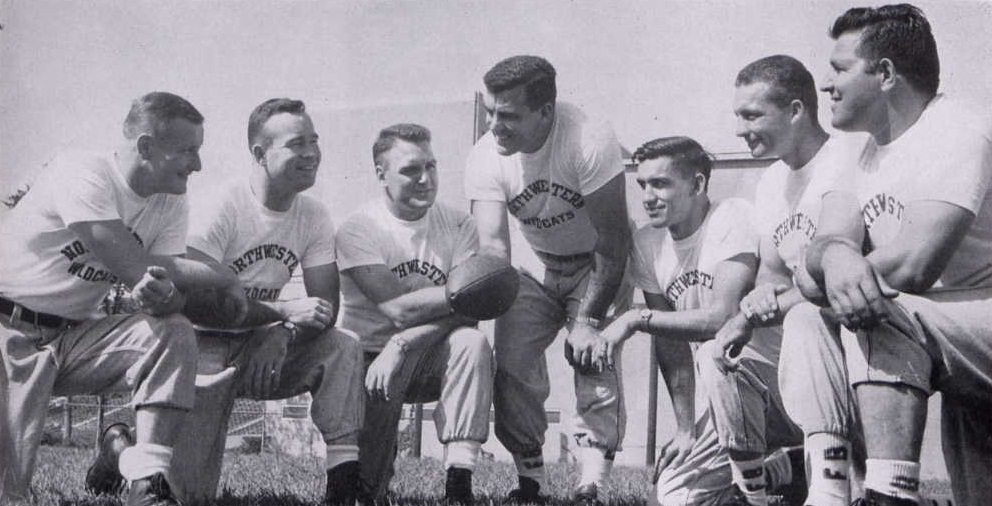
This story, however, does have a happy ending. Ara Parseghian got a warm welcome Homecoming Weekend in 2010 and greatly enjoyed being around Coach Fitzgerald and the players.
Players like Flatley also fondly remembered their time in Evanston.
“We were very proud to be student athletes at Northwestern,” Flatley said. “And we always hope that your team, and it will always be my Wildcats, that [they’re] successful.”
Members of the 1962 football team reunite at Homecoming, days after head coach Ara Parseghian's death.
With the ’Cats currently sitting at 4-0 and ranked No. 19 in the latest AP Poll, the team is trending upwards again, but their success is not unprecedented. Northwestern teams have done it before.
Here’s hoping they can do it again.